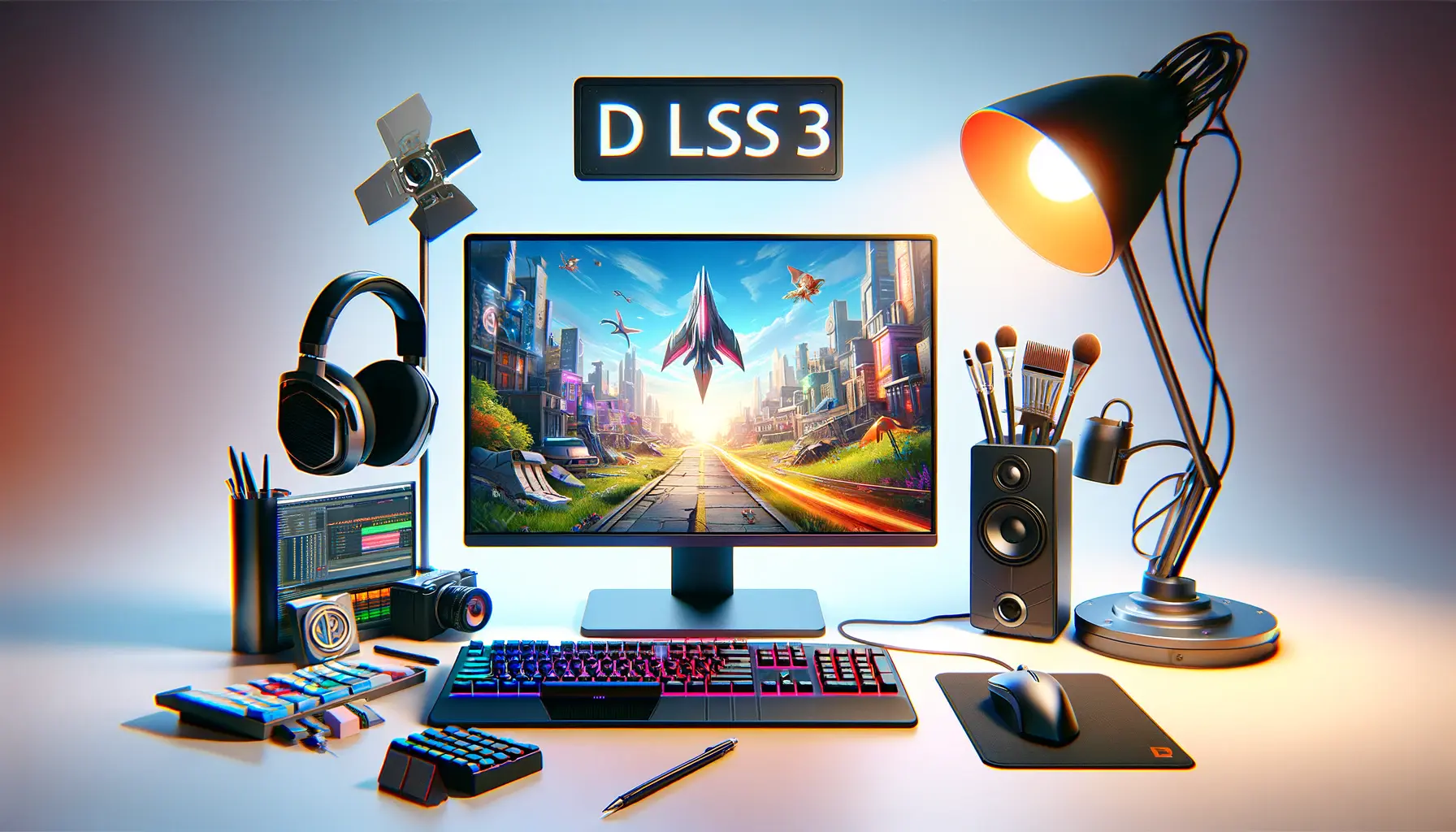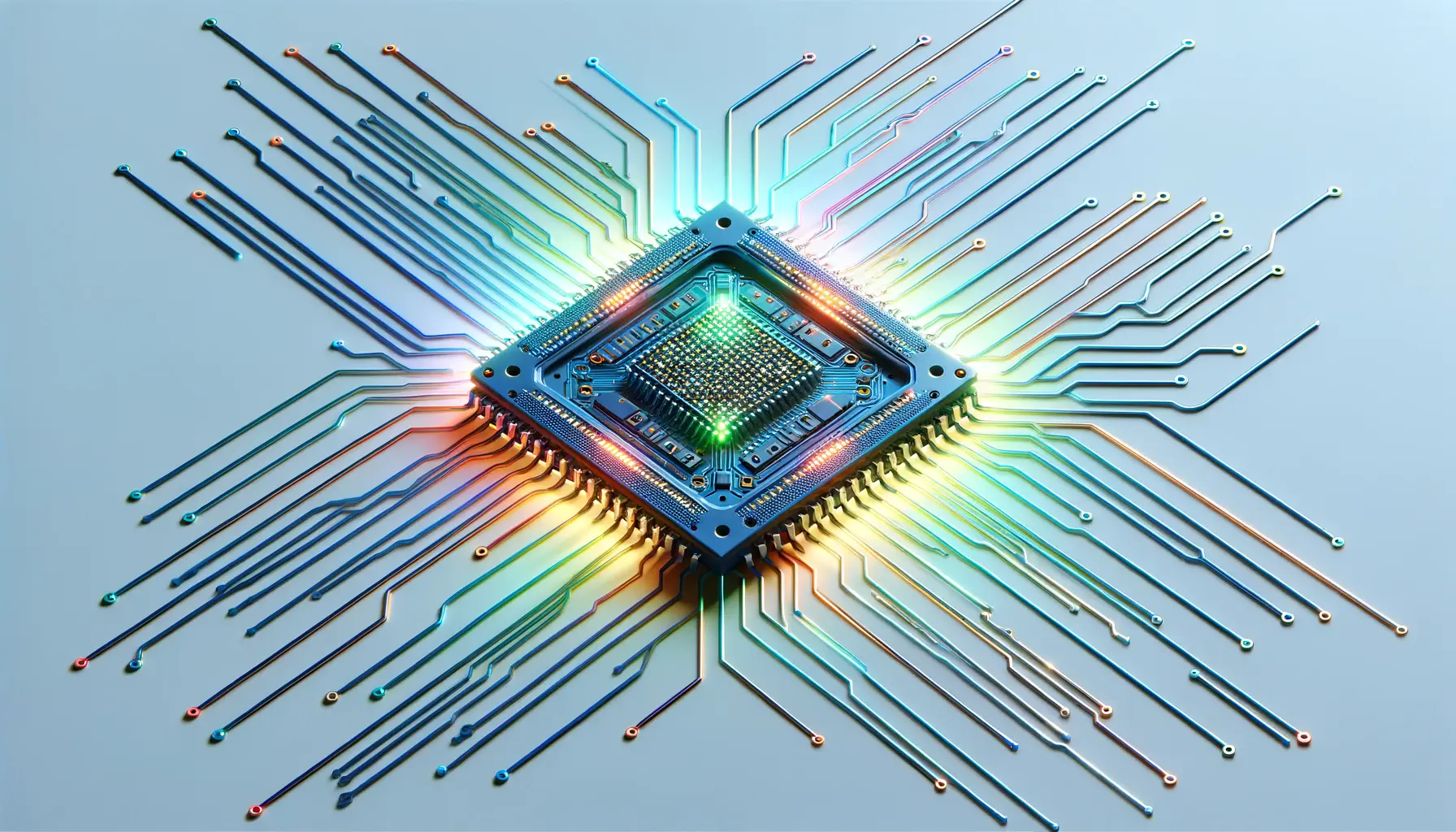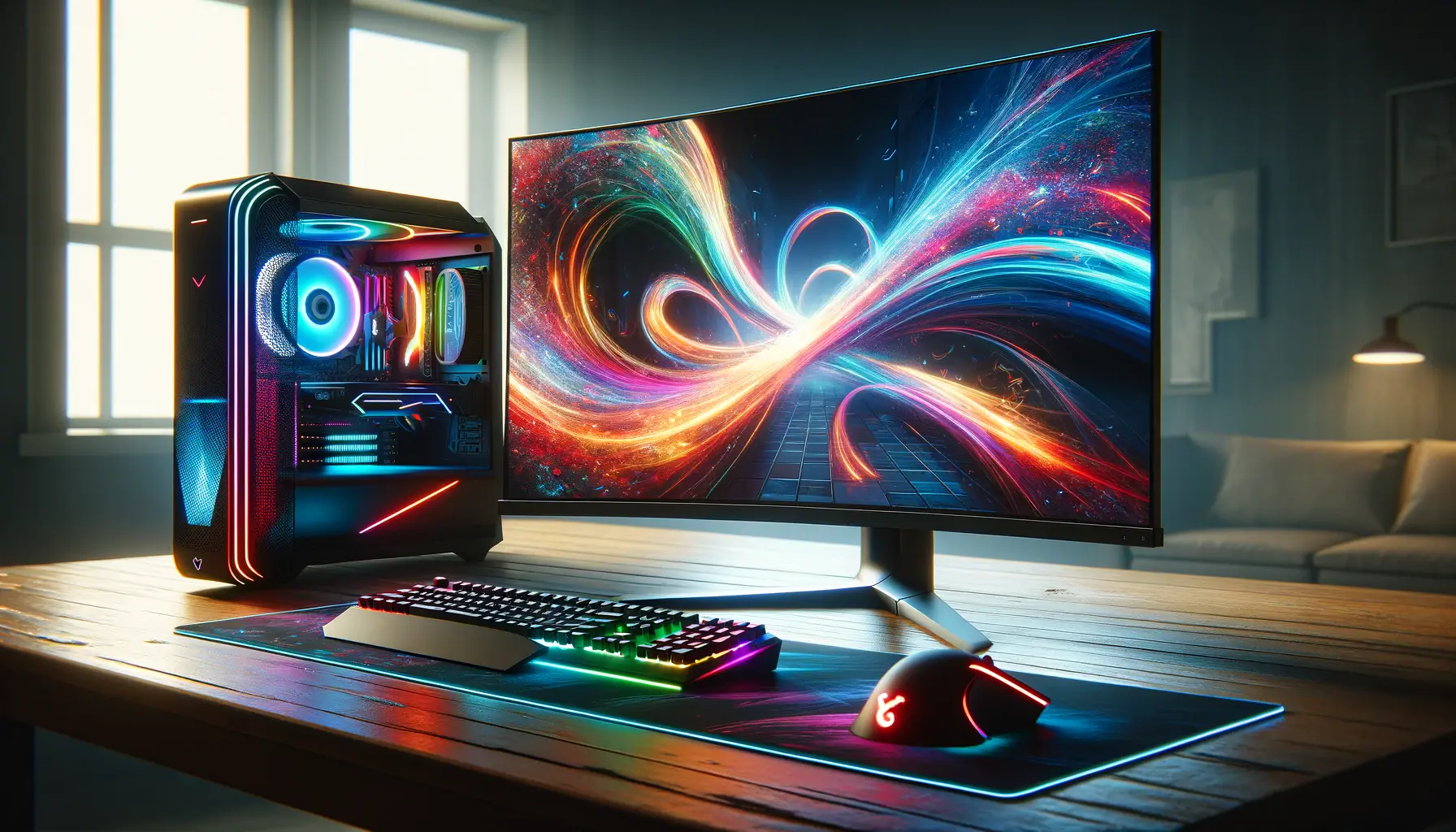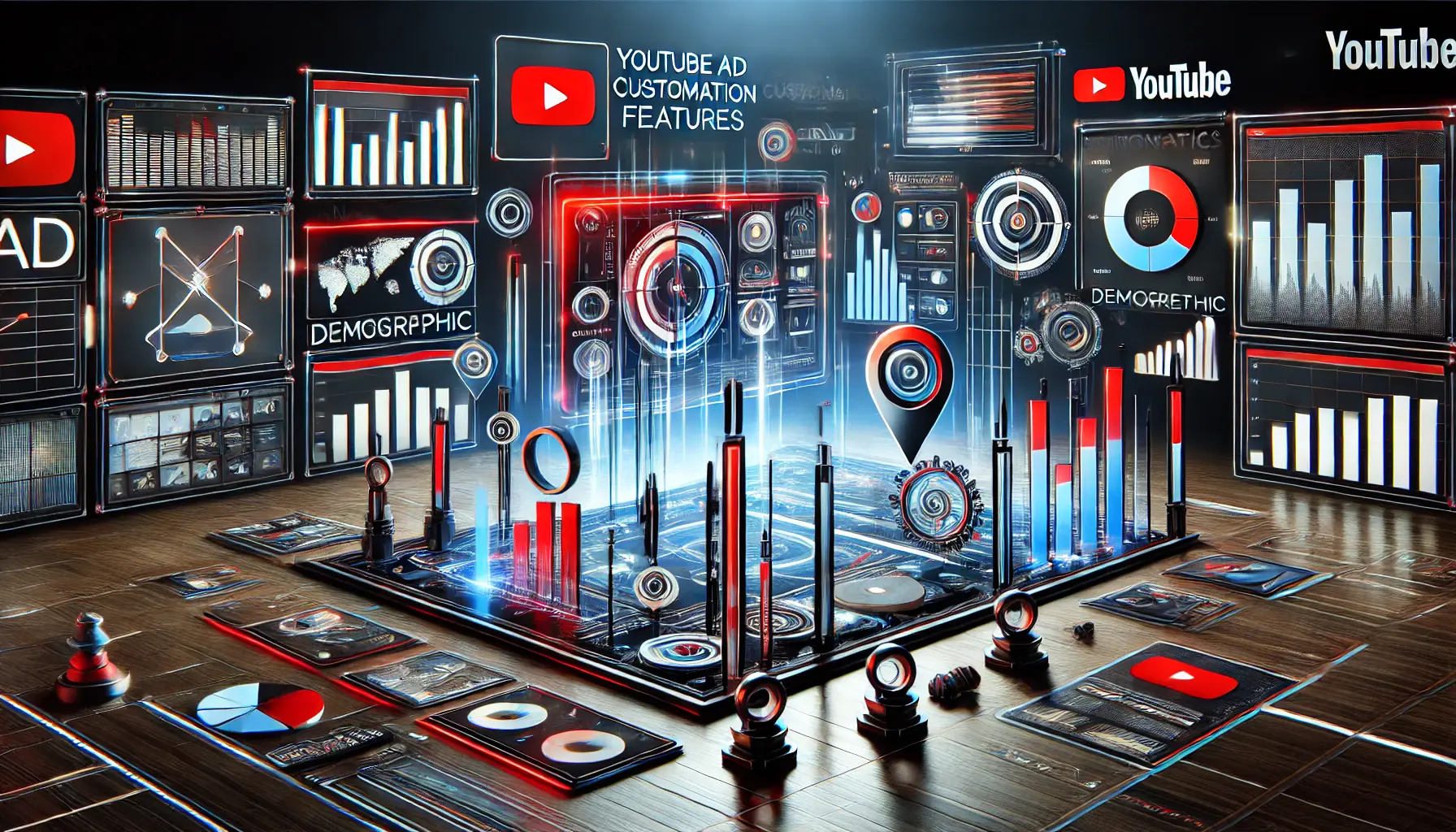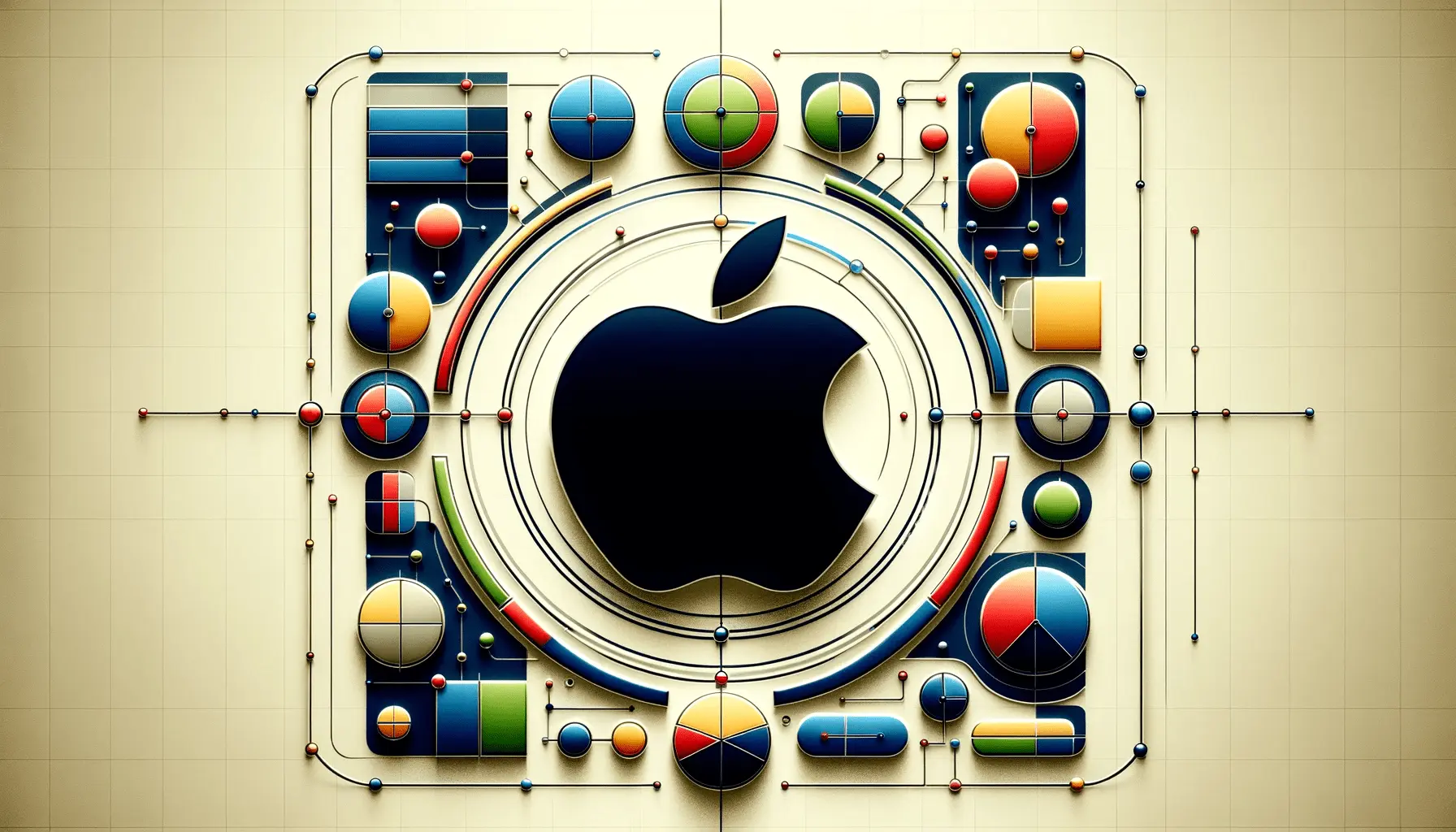The realm of gaming is constantly evolving, with technological advancements pushing the boundaries of what’s possible in virtual environments.
Among these innovations, NVIDIA’s Deep Learning Super Sampling (DLSS) technology stands out, particularly with its latest iteration, DLSS 3.
This technology not only enhances gaming visuals but also introduces unprecedented levels of customization for gamers, allowing for a more immersive and tailored gaming experience.
DLSS 3, leveraging AI and machine learning, represents a significant leap forward in rendering technology.
It enables gamers to experience their favorite titles with enhanced graphics and smoother frame rates without the need for prohibitively expensive hardware upgrades.
The focus on customization allows players to fine-tune their gaming experience to match their preferences and system capabilities, marking a new era in personalized gaming.
- Understanding DLSS 3 and Its Impact on Gaming
- The Evolution of DLSS and Its Advancements
- DLSS 3’s Role in Enhancing Game Visuals
- Compatibility and Support Across Games
- Impact on Gaming Hardware Requirements
- Future Prospects of DLSS Technology
- Optimizing Gaming Strategies with DLSS 3
- Embracing the Future with DLSS 3 Customization
- DLSS 3 Customization FAQs
Understanding DLSS 3 and Its Impact on Gaming
What is DLSS 3?
At its core, DLSS 3 is NVIDIA’s most advanced AI-powered technology designed to boost graphics performance without compromising on quality.
By intelligently upscaling lower-resolution images in real-time, DLSS 3 allows games to run at higher frame rates, making gameplay smoother and more visually appealing.
This technology is a game-changer for gamers, offering a blend of performance and image quality that was previously hard to achieve.
The customization aspect of DLSS 3 is particularly noteworthy.
Gamers can adjust the balance between performance and image quality according to their preferences or the demands of specific games.
This level of control ensures that each player can enjoy the best possible gaming experience, tailored to their individual needs and the capabilities of their gaming setup.
Customization Options and Gamer Control
DLSS 3 introduces a variety of customization options, allowing gamers to tweak settings such as image sharpness, resolution scaling, and frame rate targets.
These settings can be adjusted on a per-game basis, providing the flexibility to optimize performance or visual fidelity as desired.
Whether prioritizing the smoothness of fast-paced action or the detail of stunning game environments, DLSS 3 puts the power in the hands of the player.
Moreover, the technology’s AI-driven approach means that it continuously learns and improves over time.
This ensures that the customization options available to gamers become even more effective as the system adapts to a wide range of games and hardware configurations.
The result is a more personalized gaming experience that evolves alongside the technology itself.
DLSS 3’s customization options empower gamers to tailor their experience, blending performance with visual quality in unprecedented ways.
The introduction of DLSS 3 marks a significant milestone in the journey towards more personalized and immersive gaming experiences.
By offering gamers the ability to customize their settings to such a granular level, NVIDIA is not just enhancing the visual quality of games but also redefining what it means to play them.
As we look to the future, the potential for further customization and improvement in AI-driven technologies like DLSS 3 promises to keep pushing the boundaries of gaming, making it an exciting time to be a gamer.
The Evolution of DLSS and Its Advancements
The journey of Deep Learning Super Sampling (DLSS) technology from its inception to the latest version, DLSS 3, is a testament to NVIDIA’s commitment to innovation in gaming graphics.
This evolution has been marked by significant milestones, each bringing us closer to the ideal balance between performance and visual fidelity.
Understanding this progression is key to appreciating the customization capabilities that DLSS 3 offers to gamers today.
DLSS began as a groundbreaking approach to rendering, using AI and deep learning to upscale lower-resolution images in real-time.
This allowed for improved performance without a noticeable loss in image quality.
However, it was DLSS 3 that truly revolutionized the gaming experience by introducing features that catered to a wide array of gamer preferences and system specifications.
Key Milestones in DLSS Development
- DLSS 1.0: Introduced the foundation of AI-based rendering, focusing on improving frame rates while maintaining visual quality.
- DLSS 2.0: Brought significant improvements in image quality and flexibility, allowing for broader adoption across games and systems.
- DLSS 2.1: Added support for VR titles, showcasing NVIDIA’s commitment to enhancing all aspects of gaming.
- DLSS 3: Marked a major leap with the introduction of frame generation and advanced customization options, setting a new standard for performance and visual quality.
The advancements from DLSS 1.0 to DLSS 3 highlight NVIDIA’s focus on not just improving technology but also on enhancing the user experience.
Each iteration has brought with it an increased level of control and customization, allowing gamers to tailor their experience more precisely than ever before.
Customization and Performance Optimization
DLSS 3’s customization options are a direct result of the technology’s evolution.
Gamers now have the ability to fine-tune their gaming experience, adjusting settings such as:
- Resolution scaling to balance between performance and image quality.
- Image sharpness to ensure that visuals remain crisp and clear, regardless of the scaling.
- Frame rate targets to achieve the smoothest possible gameplay, tailored to the capabilities of their hardware.
These options, combined with DLSS 3’s AI-driven enhancements, ensure that gamers can enjoy a level of customization that was previously unimaginable.
Whether it’s achieving buttery smooth frame rates in fast-paced competitive games or enjoying breathtakingly detailed environments in single-player titles, DLSS 3 makes it possible.
The evolution of DLSS technology underscores the importance of customization in gaming, with DLSS 3 offering the most personalized experience yet.
In conclusion, the development of DLSS technology, culminating in DLSS 3, has been a journey towards achieving the perfect blend of performance, visual quality, and customization.
As we look forward, the potential for further advancements in AI-driven rendering technologies promises to continue enhancing the gaming experience, making it an exciting time for gamers around the world.
DLSS 3’s Role in Enhancing Game Visuals
DLSS 3, NVIDIA’s latest iteration in the Deep Learning Super Sampling technology series, plays a pivotal role in enhancing game visuals, offering gamers an unparalleled visual experience.
This technology leverages advanced AI algorithms to upscale images in real-time, allowing for higher frame rates without sacrificing image quality.
The impact of DLSS 3 on game visuals is profound, providing a clearer, more detailed, and immersive gaming environment.
The technology’s ability to deliver high-quality visuals while maintaining optimal performance is a game-changer for the gaming community.
It means that even gamers with mid-range hardware can experience their favorite titles in stunning detail, previously only achievable with top-tier gaming rigs.
Improving Image Quality and Resolution
One of the key benefits of DLSS 3 is its impact on image quality and resolution.
By intelligently upscaling images, DLSS 3 ensures that gamers can enjoy their games at higher resolutions without the need for powerful hardware.
This not only makes games look better but also enhances the overall gaming experience by making environments and characters more realistic and immersive.
- Enhanced Texture Details: DLSS 3 significantly improves the clarity and detail of textures, making game environments more lifelike.
- Sharper Images: The technology reduces blurring and artifacts, resulting in sharper and clearer images.
- Improved Shadow and Lighting Effects: DLSS 3 enhances shadow and lighting effects, adding depth and realism to game visuals.
Customization for Optimal Performance
DLSS 3’s customization options extend beyond visual enhancements, allowing gamers to optimize their gaming experience for performance.
This means that players can adjust settings to achieve a balance between visual fidelity and frame rate, ensuring smooth gameplay even in the most demanding titles.
- Frame Rate Optimization: Gamers can target specific frame rates to ensure smooth gameplay, adjusting DLSS settings to maintain performance.
- Resolution Adjustments: DLSS 3 allows for dynamic resolution scaling, enabling gamers to prioritize performance or visuals as needed.
- Quality Settings: The technology offers various quality modes, from “Performance” to “Ultra Quality,” allowing users to choose the best option for their system.
The role of DLSS 3 in enhancing game visuals cannot be overstated.
It not only improves the visual quality of games but also provides the flexibility to customize the gaming experience to suit individual preferences and system capabilities.
This blend of performance and quality is what sets DLSS 3 apart, making it a crucial technology for gamers seeking the best possible experience.
DLSS 3’s advanced AI algorithms are the key to its ability to enhance game visuals while offering significant customization options for gamers.
Compatibility and Support Across Games
One of the most critical aspects of DLSS 3’s success and adoption is its compatibility and support across a wide range of games.
NVIDIA has worked closely with developers to ensure that DLSS 3 is integrated into both new releases and existing titles, expanding the technology’s reach and impact.
This widespread support not only enhances the performance and visual quality of a diverse array of games but also underscores NVIDIA’s commitment to providing a superior gaming experience across the board.
The compatibility of DLSS 3 with various games means that players can enjoy the benefits of this technology, regardless of their gaming preferences.
From fast-paced shooters to immersive role-playing games, DLSS 3 offers improvements in performance and visual fidelity that are hard to ignore.
Expanding Game Support
- New Releases: Many upcoming games announce DLSS 3 support right out of the gate, promising optimized performance and visuals from day one.
- Existing Titles: Updates and patches are being released for existing games, adding DLSS 3 support and breathing new life into these titles.
- Genre Diversity: DLSS 3’s benefits are not limited to a single genre, with support spanning across FPS, RPG, strategy games, and more, ensuring a broad appeal.
How Gamers Benefit
The compatibility and support of DLSS 3 across a wide range of games have several benefits for gamers:
- Enhanced Performance: Gamers can enjoy smoother gameplay and higher frame rates in supported titles, making for a more enjoyable gaming experience.
- Improved Visuals: DLSS 3 enhances the visual quality of games, providing more detailed and immersive environments.
- Greater Accessibility: By improving performance without the need for high-end hardware, DLSS 3 makes high-quality gaming more accessible to a wider audience.
This broad compatibility and support highlight the versatility of DLSS 3 and its ability to cater to a wide range of gaming needs and preferences.
By continuously expanding the list of supported games, NVIDIA ensures that DLSS 3 remains at the forefront of gaming technology, offering tangible benefits to gamers across the globe.
DLSS 3’s widespread game support is a testament to NVIDIA’s commitment to enhancing the gaming experience for players of all types of games.
Impact on Gaming Hardware Requirements
The advent of DLSS 3 has significantly influenced the landscape of gaming hardware requirements, shifting the paradigm for gamers and system builders alike.
By optimizing performance through AI-driven upscaling, DLSS 3 allows for high-quality gaming experiences without necessitating top-tier hardware.
This development is particularly beneficial for gamers with mid-range setups, extending the lifespan of their systems and reducing the need for frequent upgrades.
Traditionally, keeping up with the latest games meant investing in the newest, most powerful GPUs and CPUs.
However, DLSS 3’s efficient processing changes this, offering a more cost-effective solution to achieving superior game visuals and performance.
Reducing the Need for High-End Hardware
- By leveraging AI to upscale images, DLSS 3 reduces the reliance on raw hardware power, allowing less powerful systems to run games at higher settings.
- It extends the viability of older GPUs, as DLSS 3 can significantly boost performance, making it unnecessary to upgrade to the latest hardware as frequently.
- The technology also lowers the entry barrier for high-quality gaming, making it accessible to a broader audience with varying budget constraints.
Optimizing System Performance
DLSS 3 not only impacts the hardware requirements for gaming but also offers tools for optimizing system performance.
Gamers can adjust DLSS settings to find the perfect balance between image quality and frame rate, tailoring the gaming experience to their system’s capabilities.
This level of customization ensures that even systems on the lower end of the performance spectrum can deliver satisfying gaming experiences.
- Frame Rate Targeting: Gamers can set specific frame rate goals, allowing DLSS 3 to adjust image processing to meet these targets.
- Resolution Scaling: Adjusting the resolution scaling settings in DLSS 3 can help achieve a balance between performance and visual fidelity.
- Quality Modes: DLSS 3 offers various quality modes, enabling gamers to prioritize either image quality or performance based on their preference and hardware limitations.
The impact of DLSS 3 on gaming hardware requirements is profound, democratizing access to high-quality gaming experiences.
This shift not only benefits gamers by providing more flexibility and choice but also represents a significant step forward in the evolution of gaming technology.
DLSS 3’s influence on hardware requirements marks a significant shift towards more accessible and customizable gaming experiences for all.
Future Prospects of DLSS Technology
The continuous development and refinement of Deep Learning Super Sampling (DLSS) technology, especially with the advent of DLSS 3, open up exciting prospects for the future of gaming.
NVIDIA’s commitment to leveraging AI for enhancing gaming experiences suggests that the journey of DLSS is far from over.
The potential for further advancements holds the promise of even more personalized, immersive, and visually stunning gaming experiences.
As DLSS technology evolves, we can anticipate several key areas of focus that will shape its future trajectory.
These include broader compatibility with gaming titles, further improvements in AI algorithms for even better performance and visual quality, and enhanced customization options for gamers.
Expanding Compatibility and Support
- Continued efforts to integrate DLSS with a wider array of games, including indie titles and older classics, ensuring that more gamers can benefit from this technology.
- Partnerships with game developers and publishers to ensure DLSS is a standard feature in new releases, enhancing the gaming experience right from the launch.
Advancements in AI and Machine Learning
- Investment in research to refine the AI algorithms that power DLSS, aiming for even more efficient upscaling with less impact on system resources.
- Exploration of new AI techniques that could further reduce the need for high-end hardware, making high-quality gaming even more accessible.
Enhanced Customization for Gamers
- Development of more intuitive and granular control settings within the DLSS framework, allowing gamers to fine-tune their gaming experience to an unprecedented degree.
- Introduction of user-friendly interfaces and tools within gaming platforms and hardware settings to simplify the customization process.
The future of DLSS technology is not just about enhancing the visual quality or performance of games.
It’s about redefining what is possible in the gaming world, pushing the boundaries of realism, and making the gaming experience more accessible and enjoyable for everyone.
With each iteration, DLSS moves closer to achieving these goals, promising a future where the lines between virtual and reality become increasingly blurred.
The potential for DLSS technology is boundless, with future advancements poised to revolutionize the gaming experience further.
Optimizing Gaming Strategies with DLSS 3
DLSS 3 not only enhances the visual fidelity and performance of games but also offers strategic advantages to gamers.
By optimizing settings to match gameplay needs, players can gain a competitive edge in fast-paced environments or enjoy a more immersive experience in story-driven titles.
This aspect of DLSS 3 underscores its role as a tool for both performance enhancement and strategic gameplay optimization.
The ability to customize game settings with DLSS 3 enables players to adapt their gaming strategy according to the demands of each title.
Whether it’s achieving smoother frame rates in competitive shooters or maximizing visual detail in open-world explorations, DLSS 3 provides the flexibility to tailor the gaming experience to individual preferences and objectives.
Strategic Advantages in Competitive Gaming
- Increased Frame Rates: By boosting frame rates, DLSS 3 helps reduce lag, making gameplay smoother and more responsive, which is crucial in competitive gaming scenarios.
- Improved Visual Clarity: Enhanced image quality means players can spot enemies and important game elements more easily, providing a tactical advantage.
Enhancing Immersion in Single-Player Titles
- Richer Visual Details: DLSS 3’s upscaling capabilities bring game worlds to life with stunning detail, enhancing the immersion and overall gaming experience.
- Customizable Visual Settings: Players can adjust DLSS settings to prioritize visual fidelity, making the most of the game’s artistic design without compromising performance.
DLSS 3’s impact extends beyond mere technical improvements, influencing how games are played and experienced.
By offering a blend of performance and quality, it allows gamers to not just play, but strategically engage with their favorite titles.
This level of engagement and customization is what sets DLSS 3 apart, making it a valuable tool in the arsenal of modern gamers.
DLSS 3 offers gamers not just visual and performance enhancements but also strategic advantages, transforming how games are played and experienced.
Embracing the Future with DLSS 3 Customization
The journey through the capabilities and impacts of DLSS 3 customization on the gaming world reveals a future where technology and personal preference converge to create unparalleled gaming experiences.
NVIDIA’s DLSS 3 technology stands as a beacon of innovation, pushing the boundaries of what’s possible in game visuals and performance.
This technology not only enhances the gaming landscape but also offers a glimpse into the future of interactive entertainment, where customization and efficiency play pivotal roles.
The Cornerstone of Modern Gaming
DLSS 3 has emerged as a cornerstone technology for modern gaming, offering a blend of high performance, stunning visuals, and extensive customization options.
This technology allows gamers to experience their favorite titles in ways that were previously unimaginable, setting new standards for what games can look and feel like.
The ability to tailor gaming experiences to individual preferences and system capabilities is perhaps the most significant advancement brought about by DLSS 3, marking a new era in personalized gaming.
Strategic Advantages and Enhanced Immersion
The strategic advantages provided by DLSS 3 customization extend beyond mere aesthetics, impacting gameplay and competitive dynamics.
By optimizing settings for performance or visual fidelity, gamers can gain a competitive edge or dive deeper into the immersive worlds of single-player titles.
This level of control and customization ensures that every gaming session is not just played but experienced to its fullest potential.
Looking Ahead: The Future of Gaming with DLSS 3
As we look to the future, the prospects of DLSS technology and its impact on gaming are boundless.
With each iteration, NVIDIA continues to refine and enhance this technology, promising even greater levels of performance, visual quality, and customization.
The ongoing development of DLSS technology signifies a commitment to pushing the envelope of gaming technology, ensuring that gamers’ experiences continue to evolve and improve.
- The expansion of game support ensures that more titles will benefit from DLSS 3’s enhancements, making high-quality gaming experiences more accessible to a wider audience.
- Further advancements in AI and machine learning algorithms promise to deliver even more efficient upscaling, reducing the need for high-end hardware and making premium gaming experiences available to everyone.
- Enhanced customization options will allow gamers to fine-tune their experiences with even greater precision, ensuring that every game can be tailored to meet individual preferences and system capabilities.
In conclusion, DLSS 3 customization represents a significant leap forward in gaming technology, offering gamers unprecedented control over their gaming experiences.
As this technology continues to evolve, it will undoubtedly play a crucial role in shap
DLSS 3 Customization FAQs
Explore the most common inquiries about DLSS 3 customization to enhance your gaming experience.
DLSS 3 uses AI to upscale images, improving frame rates and visual quality without needing high-end hardware, transforming gaming experiences.
It allows gamers to tailor game performance and visual settings, optimizing their experience based on personal preferences and system capabilities.
Yes, DLSS 3 significantly enhances visuals and performance on mid-range systems, making high-quality gaming more accessible.
DLSS 3 features include AI-driven image upscaling, frame generation, and extensive customization options for gamers.

